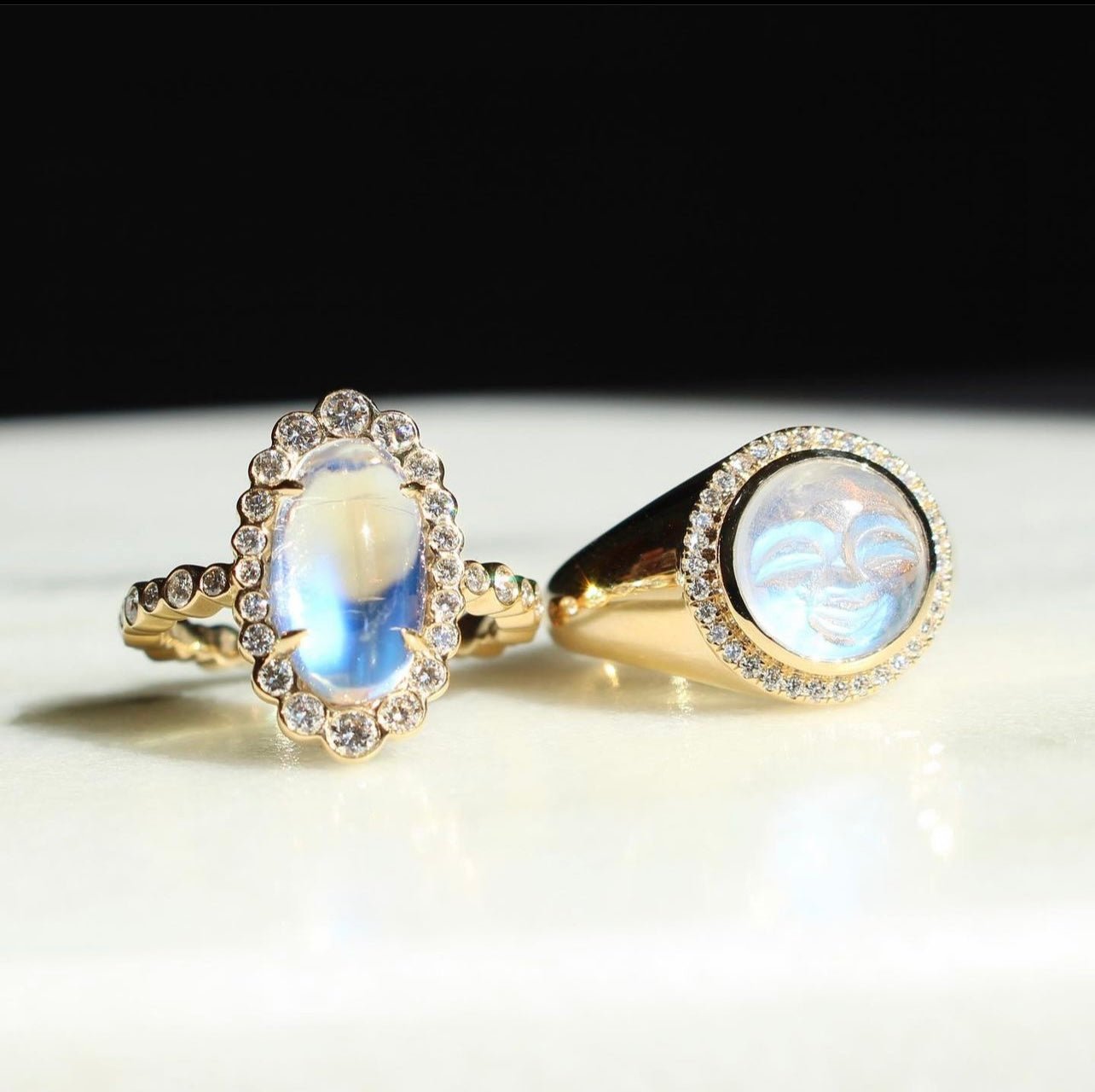Have you ever been drawn to a pair of diamond earrings? Perhaps a diamond engagement ring caught your eye. You might have loved the stone’s sparkle and shine, but could you name the cut off the top of your head?
Unless you are a jeweler, diamond cutter, or gemologist, it would be unfair to quiz you on the types of diamond cuts. There are so many that it can be difficult for even professionals to keep track! It does aid you in identifying the style of diamond you like when you can list a few off. Knowing the basics can certainly go a long way.
Maybe you’re planning a wedding and need a buying guide for engagement rings. Or maybe you’re merely interested in the behind-the-scenes of the diamond world. Either way, at Mark Henry Jewelry, we’re here to help. With so many terms and cuts to learn, we can’t wait to begin.
We’ll outline each of the most popular diamond cuts and explore a few non-traditional ones too. After reading historical descriptions, and a preface with diamond basics, you’ll be a cut pro in no time.
Read on and discover the reason why people study diamond cuts for a living!
What Is a Rough Diamond?
A rough diamond is typically not optimally sparkly in the way that consumers expect.
Before we explain the specifics behind diamond cuts, we want to address the obvious. You’re probably asking yourself, what exactly makes the diamond cutting process so important?
Since diamonds are minerals, their natural state is referred to as “rough.” While they likely have a natural glow about in this state, a cut diamond has the ideal appearance. That is when the diamond’s sparkle truly shines.
Light Return and Shining Bright
When considering how to cut a diamond, one wants it to be as bright as possible. The stone should have the most white light possible bouncing back both inside and outside of it.
Collectors also look for a diamond’s “fire” — how much white light bleeds into nearby colors. Finally, the scintillation of a diamond, how much it sparkles and creates shadows, is considered during the cutting process.
Why Do Diamond Cuts Matter?
Diamond cuts contribute to the final appearance of a piece of jewelry. After the diamond is cut, it is polished and placed inside of a setting. Without the proper cut, the stone would appear bland and not have the same level of value and beauty.
Diamonds and Grading Reports
The overall quality of any gemstone, but especially a diamond, is determined using the 4 Cs method. This tool was developed by the Gemological Institute of America. It focuses on the color, clarity, and carat weight of a stone to create its certified grade. If a diamond has a poor cut, the overall grade diminishes exponentially.
Sliding Scales: The Diamond Cut
Just like every other category, the cut of a diamond is given a ranking from an excellent cut to poor. To have an excellent grade, the cut checks all of the boxes aforementioned (brightness, fire, and scintillation).
From there, quality decreases to very good, good (uneven sparkle throughout), fair (best as side stones, not center). Poorly cut diamonds are not sold by reputable retailers.
While the GIA is the laboratory to take the initiative in developing a diamond cut grade system, others have followed suit. The most commonly seen certification for fine gems comes from GIA, and we use GIA Graduate Gemologists at Mark Henry. You might also see certifications from the American Gem Society or the International Gemological Institute, among many others.
What Shape Diamond Sparkles the Most?
If you have any experience shopping for diamonds, you’re probably familiar with the terms: brilliant cut and step cut. These are the two most famous cuts for this stone. They each have their own offshoots, which we will explore.
Keep their names in mind while you browse jewelry stores and determine your cut preferences to find your own perfect diamond.
What Are Brilliant Cuts?
Marcel Tolkowsky is to thank for this innovation in diamond jewelry. The cut came to fruition in 1919. It features at least 58 facets, which are the angles that a diamond gets its brilliance from. The round brilliant is one of the most common types of the brilliant cut, holding claim over ⅔ of all diamond cuts.
With a brilliant cut diamond, you are guaranteed to have ultimate sparkle and shine with any amount of light that catches. These are fantastic cuts for engagement rings because you want to show off with such a special jewelry piece.
If you have a diamond with many natural inclusions, they are easily concealed by the brilliant cut’s facets. This is great for eye-grade clarity but might not be as impactful under professional magnification.
What Are Step Cuts?
Instead of having facets that look at one another, step cuts include facets in the shape of rectangles and squares. The diamond’s facet appears to be visually descending, hence the name. Diamonds look larger when they are step cut because the facets give the illusion of a broader table.
Inclusions or excess color in the diamond will be visible with this cut. By keeping the diamond high grade in the other 3Cs, this potential issue is avoided.
All in the Family: Other Diamond Cuts
Here are a few of our favorite additional cuts:
What Are Brilliant Subsets?
Apart from the round brilliant diamond, the oval brilliant cut is incredibly famous. Lazare Kaplan first used it in 1957. The oval diamond cut works best when used in the middle of a jewelry piece. It begs for attention with 58 facets and gives off the most amazing gleam.
The princess cut diamond may seem like an anomaly. It is a square diamond, classifying it as a step cut. However, it has 58 facets; it is a brilliant cut. Arpad Nagy is the wasteless brain behind this cut, which retains 80% of the diamond’s natural material.
Lodewyk van Bercken is another genius in the diamond cutting world. In the 1400s, he developed the cutting wheel, heart cut, and pear shape cut. Heart cuts include 59 facets and are best when used in a diamond over .5ct. Pear cuts look like teardrops and can range in facets from 58 to 71 for incredible brilliance.
Did you know that brilliant cuts can also be modified? Look at the marquise cut, for example. The legacy of King Henry XV’s lover Marquise de Pompadour lives on in the form of her lips. They were used as the inspiration for this shape, with duly spiked ends and the largest carat for carat surface area.
What Are Step Subsets?
With fame in the 1940s, the emerald cut diamond has the classic table shape step cuts are known for. If you’re trying to optimize the visual size of a diamond, an emerald cut is the way to go.
The Asscher cut diamond is accredited to Joseph Asscher. Based in the early 1900s, it had a narrower table and 50 to 74 facets. However, it is not considered a brilliant cut (despite being quite sparkly with so many facets). The facet arrangement of this diamond shape is similar to the Emerald cut.
Modern Alternatives to the Diamond
Regardless of when certain cuts were introduced, they all fluctuate in trendiness over the years.
A great example of this is the baguette cut, commonly used in modern pieces. It is a cut best stationed on the side of a jewelry piece. Its history goes all the way back to the 1930s. A baker from France named August Zang styled it after, you guessed it, baguettes.
Despite having 14 facets, it can be either brilliant or step cut.
Once-In-a-Lifetime Brilliance: Everyday Wear
Some people may find that rounder cuts are more conducive to their lifestyles. The pointer, or sharper, the edges of a diamond are cut, the more likely they are to crack or chip. Especially in rings that you wear daily (like engagement rings), having a cut that protects itself is ideal.
The Mark Henry Touch
We couldn’t pass up the opportunity to share some of our best cut diamonds with you. Mark Henry Jewelry focuses on all of the 4Cs in terms of quality. We don’t neglect color, carat weight, clarity, or cut when it comes to the design process. That is why we take such immense pride in our selections.
One of the most beautiful diamond pieces we have is our Baguette Diamond Thread Ring. Remember the old baguette-style from the 1930s that we mentioned? Well, it has made a comeback! This gorgeous ring contains a chain of baguette-cut diamonds totaling 1ct.
Luxury comes in the form of our Petite Solitaire Round Diamond Halo Stud Earrings. Resting in 18kt gold, all eyes will be glued to the baby round brilliant cut diamonds radiating from the center. For a combined weight of .33ct, these diamonds are certainly bright.
Your Sparkle
Diamond cuts make a rough mineral glow from the inside out. Diamond jewelry does the same for your inner spark.
Sources:
A Complete Guide to Diamond Cut | Brides
Types of Diamond Cuts: Your Comprehensive Guide 2020 | The Wife Choice

